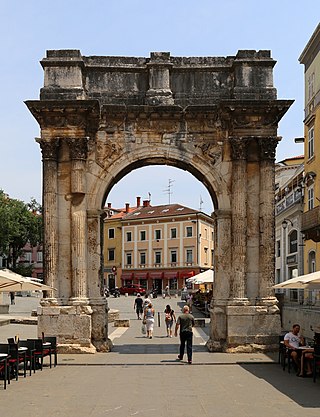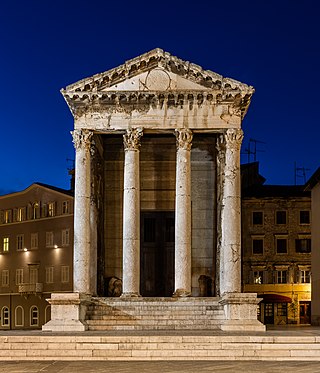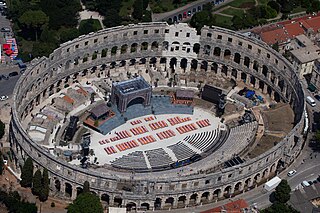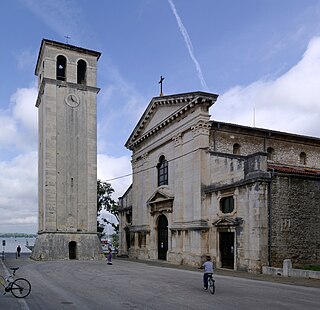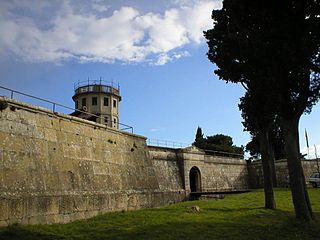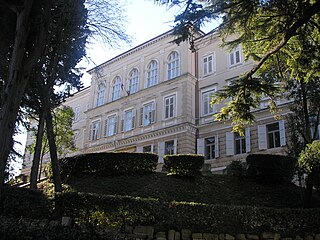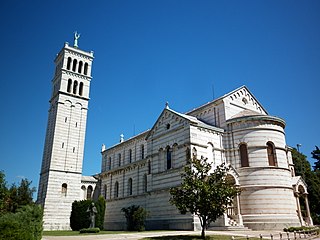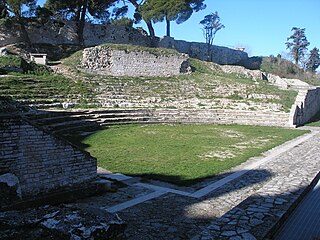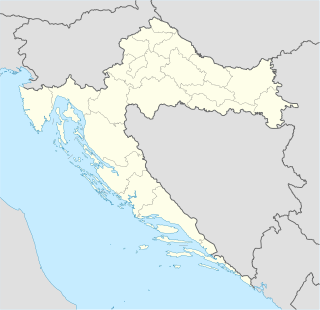11 Sights in Pula, Croatia (with Map and Images)
Legend
Premium Sights
Book tickets, guided tours and activities in Pula.
Guided Free Walking Tours
Book free guided walking tours in Pula.
Welcome to your journey through the most beautiful sights in Pula, Croatia! Whether you want to discover the city's historical treasures or experience its modern highlights, you'll find everything your heart desires here. Be inspired by our selection and plan your unforgettable adventure in Pula. Dive into the diversity of this fascinating city and discover everything it has to offer.
Sightseeing Tours in PulaActivities in Pula1. Arch of the Sergi
Arch of the Sergii is an Ancient Roman triumphal arch located in Pula, Croatia. The arch commemorates three members of the Sergii family, specifically Lucius Sergius Lepidus, a tribune serving in the twenty-ninth legion that participated in the Battle of Actium and disbanded in 27 BC. This suggests an approximate date of construction: 29–27 BC. The arch stood behind the original naval gate of the early Roman colony. The Sergii were a powerful family of officials in the colony and retained their power for centuries.
2. Temple of Augustus
The Temple of Augustus is a well-preserved Roman temple in the city of Pula, Croatia. Dedicated to the first Roman emperor, Augustus, it was probably built during the emperor's lifetime at some point between 27 BC and his death in AD 14. It was built on a podium with a tetrastyle prostyle porch of Corinthian columns and measures about 8 by 17.3 m, and 14 m (46 ft) high. The richly decorated frieze is similar to that of a somewhat larger and more recent temple, the Maison Carrée in Nîmes, France. These two temples are considered the two best complete Roman monuments outside Italy.
3. Pula Amphitheatre
The Pula Arena is a Roman amphitheatre located in Pula, Croatia. It is the only remaining Roman amphitheatre to have four side towers entirely preserved. It was constructed between 27 BC and AD 68, and is among the world's six largest surviving Roman arenas. The arena is also the country's best-preserved ancient monument.
4. Cathedral of the Assumption of the Blessed Virgin Mary
The Pula Cathedral or fully the Cathedral of the Assumption of the Blessed Virgin Mary is a co-cathedral in Pula, Croatia. Along with the Euphrasian Basilica it is one of the two official seats of the Roman Catholic Diocese of Poreč and Pula. The church is located on the south side of the Pula bay at the foot of the hill with the 17th century Venetian fort. The site of the present-day church has been used for religious worship since ancient Roman times and the first Christian churches on the site were built in the late 4th and early 5th century AD. These had gone through a series of enlargements and reconstructions over the ages.
5. Roman Twin gates
The Dvojna vrata is a Roman city gate located in Pula, Croatia. It was built during the late 2nd century. Porta Gemina is a double arched gate. It was one of the ten city gates of Pula, standing at the north side of the capitol.
6. Historical and Maritime Museum of Istria
The Historical and Maritime Museum of Istria is located on the highest hill in Pula, at an altitude of 32.4 meters, between the sea and the hills of the Arena, Zara and St. Michael, in an adapted Venetian fortress. Since 1961, it has housed the working and exhibition rooms of the Historical and Maritime Museum of Istria, which was founded on December 31, 1955 as the Museum of the Revolution.
7. Archaeological Museum of Istria
The Archaeological Museum of Istria is a special museum founded in 1902 in Pula. It covers an area of 3600 m². The museum contains three collections: prehistoric, ancient, and late antique and medieval. Dislocated objects within the Museum include the site of Nesactium. Monuments in the city of Pula under the care of the Museum are: the Amphitheater, the Temple of Augustus, the Temple of Diana, the mosaic "The Punishment of Dirka", the Arch of Sergius, the Double Gate, the Gate of Hercules and the Basilica of St. George. Maria Formosa.
8. crkva Gospe od Mora
The Naval Church in Pula was built on the hill of St. Polycarp in Pula at the end of the 19th century. Specifically, construction began in 1891, and the church was completed in 1898. The style of construction is a mixture of neo-Byzantine and neo-romanticism, and three architects left their mark on the church: Friedrich von Schmidt, Victor Lunz and Natale Tommasi. The latter was from the vicinity of Trento, and in 1890 he also designed the building of the State German Gymnasium in Pula and the parish church of St. Agnes in Medulin.
9. Malo rimsko kazalište
The Small Roman Theatre in Pula was probably built in the 1st century on the eastern slope of the Pula hill at the foot of the old Castrum. It occupied a much larger area than what is visible today, because archaeological research has not been fully completed.
10. Naval Park
The Naval Park in Pula is the oldest city park in Pula, built in 1863. It was created with the development of the Pula district of St. Polycarp as the first planned city park. The park, like other parks in Pula that was created later, is arranged in the style of park architecture that prevailed in the second half of the 19th century: it abounds in exotics located on islands surrounded by free-form hiking trails, with the main emphasis on the central roundel with the monument to Archduke Ferdinand Maximilian, and smaller accents in the form of two sideways fountains. It has been preserved in its original size, like most of Pula's city parks from that period. Over time, however, there were changes in the layout of the trails and the number of plant species was reduced because many exotics did not adapt to the climatic conditions or were replaced by cheaper indigenous and domesticated species as worn-out. The park covers 12,000 square meters, of which 4,700 square meters are under paths, and the rest is covered with plant cover.
11. Aquarium Pula
Aquarium Pula is an aquarium in Pula, Croatia. The aquarium has 211 species of animal, including blacktip reef sharks, caimans and a centre for the rehabilitation of turtles. As of the start of 2020, it had rehabilitated 160 loggerhead turtles and returned them to the sea.
Share
Disclaimer Please be aware of your surroundings and do not enter private property. We are not liable for any damages that occur during the tours.
